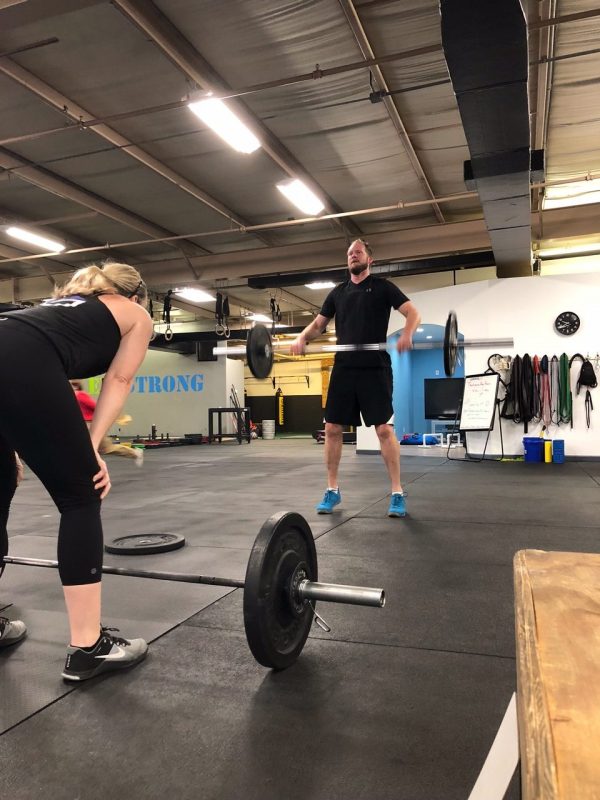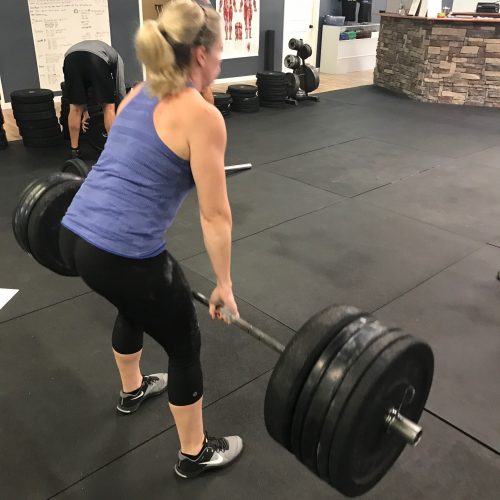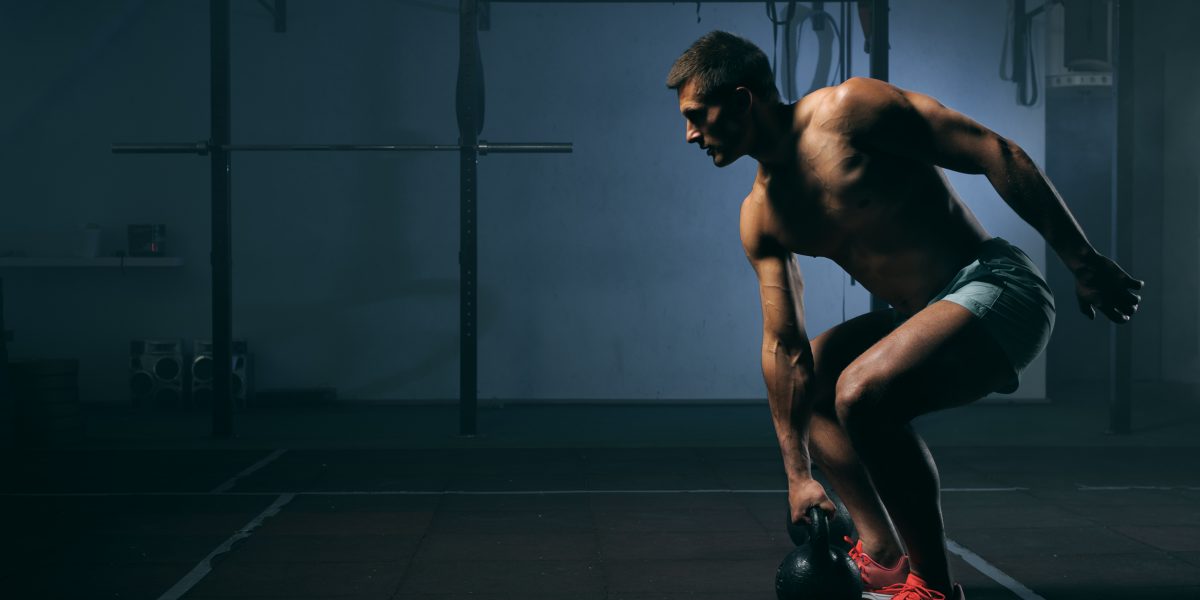Common HIIT Injuries and How to Prevent Them
While High-Intensity Interval Training (HIIT) workouts are safe and carry no higher risk of significant injury than any other sport, that doesn’t mean that they are free of risk. Like any sport, there are certainly chances for minor HIIT injuries. These include any injury that causes pain without preventing participation or needing surgical treatment. For example, high-rep Olympic lifts can cause shoulder strains, especially when you tire at the end of a workout. Heavy lifts can cause back injuries if your form is off. Repetitive gripping on a bar or rig leads to tennis elbow. Frequent jumping can lead to patellar tendinitis. And muscle strains are common with any form of high-intensity exercise. Those are certainly some of the more common problems I see in the clinic from these types of WODs.
Five Common HIIT WOD Injuries Include:
- Muscle Strains
- Shoulder Injury
- Patellar Tendinitis
- Back Injuries
- Tennis Elbow
Muscle Strains
HIIT workouts often cause Delayed Onset Muscle Soreness (aka DOMS) which is the formal name for the pain that makes you hate life a couple of days after a workout. A muscle strain is a more significant problem DOMS. A strain is partial tearing of the muscle itself. Athletes experience sharp pain in the muscle with any active use. Many athletes sustain muscle strains while attempting max lifts or using heavy weights on cleans or other compound motions. Poor technique is often to blame. The best treatment for this is usually rest, ice, stretching, and over-the-counter anti-inflammatories. Be sure to warm up properly and work on your mobility regularly to help prevent muscle strains. Put your ego aside and keep the weight light until you have the form and motor pattern down for complex lifts. Once you suffer a muscle strain, it takes six weeks or more to heal.
Shoulder Injuries
Impingement Syndrome the most common shoulder injury in High-Intensity Workouts. It causes sharp pain in the shoulder with activity. Impingement causes repetitive micro damage to the rotator cuff. The rotator cuff is a deep set of muscles around the shoulder that help to coordinate motion. Impingement syndrome is most often caused by repetitive activity with the shoulder in poor position. Kipping, toes-to-bar, snatches, and presses are the most common ways to injure your shoulder in some of the popular workouts today. Problems with the rotator cuff can cause pain when lifting the arm or sleeping on the shoulder.
The first step in the treatment of pain in the shoulder should be deloading – keep your overhead lifts much lighter than usual and decrease the reps. The most important things to prevent rotator cuff pain in gymnastics and Olympic lifting is to keep your chest open, your shoulder blades drawn together, and your trapezius relaxed. This opens the socket in such a way as to prevent impingement. If shoulder pain does not improve with rest, ice, and anti-inflammatories then a trip to your physician or a physical therapist is probably in order. Rotator-cuff specific exercises with light resistance bands can also help. Check out our full post on preventing shoulder pain here!

Patellar Tendinitis
Patellar Tendinosis is commonly called Jumper’s Knee. (See this link for the difference between tendinitis and tendinosis.) Repetitive strain to the tendon between the shin and kneecap leads to tendinosis. Many activities in HIIT boxes can strain this tendon including box jumps, squats, assault bike, and running. It causes pain in the front of the knee that is worse with exercise. While repetitive use is the primary cause, tight hamstrings are another culprit. Regular hamstring stretching can help prevent and treat patellar tendinosis. Other treatments include decreasing reps, eccentric exercises, and physical therapy modalities that improve healing of the tendon. Using a patellar tendon strap during training can also reduce pain. Medical treatments including nitro patches or PRP injections can also help. Some studies indicate stem cell injections may be able to heal tendons as well.
You can find more treatment options for patellar tendinosis here!
Back Injuries
Sprains and strains of the lower back are one of the more common injuries in Olympic lifting and powerlifting. The same lifts can cause back problems when done as part of high-intensity WODs. The main reason these injuries happen is a lack of core control. Without good core control, the body has to rely on the ligaments of the spine leading to ligament damage. Poor shoulder mobility can also lead to back injuries. Poor shoulder mobility causes the athlete to hyperextend the lower spine during lifts. Deadlifting with a rounded back can also lead to strains and sprains, as you are then generating power from your back muscles instead of glutes and legs. Having a rounded lower back also increases the pressure put on the lumbar discs.
Treatment for lower back injuries involves rest, stretching, anti-inflammatories, heating pads, and physical therapy. Supplements of Vitamin B 12 have also been shown to reduce the length of time an episode of back pain will last. If you experience numbness and tingling, or burning pain running down your legs, or changes in bowel or bladder function, you may have a more severe problem like a disc herniation. You should see a doctor right away.

Tennis Elbow
Tennis Elbow is damage to the tendon on the outer side of the elbow. It often affects athletes in their thirties and forties. It is the result of accumulated damage to the tendon from repetitive gripping. Poor ergonomics and limited shoulder and forearm mobility put you at risk for tennis elbow when you use a barbell or rig. Tendinitis is the “disease of middle age” and a frequent problem for athletes of that age no matter what sport they play. Stretching the pecs and forearms can help to prevent and treat this issue by allowing you to position the hands evenly on the bar for proper ergonomics. For more details on stopping elbow pain, look no further!
Because this problem is due to degeneration rather than inflammation, the pain often doesn’t respond to the same treatments as the other issues presented here. Rest is vital for healing since repetitive gripping is what leads to the injury. It can take weeks to months for this problem to heal. Physical therapy methods which help with tissue healing can be one of the best ways to treat it. Tendinosis also seems to respond well to PRP and stem cell injections.
Best Ways to Prevent HIIT and WOD Injuries
- Attentive Coaching
- Good Form
- On-Ramp Programs
- Core Control
- Active Recovery
- Proper Rest
- Diverse Programming
Expect to see another post soon talking more about these specific injury prevention methods. But briefly, attentive coaches help to teach appropriate form during the on-ramp course and then improve that form during workouts. Solid core control protects your extremities. It allows for proper central power generation. Core-specific exercises in warm-ups can be beneficial. Adequate rest and recovery allow your body the time needed to heal between each bout of exercise-induced micro-injury.
Good coaching is central to preventing injuries in today’s popular HIIT programs. That can be by helping athletes select appropriate weight, to help improve and maintain their form, and to recognize when their technique is breaking down. Your programming should be diverse enough to allow some rest days in the routine. When you notice that an athlete is having a particularly off day, it’s okay to suggest that they spend the session focusing on recovery exercises rather than going all-out. Recognizing movement substitution patterns can lead you to notice problems before they begin. If your box partners with a physical therapy group, be sure to utilize their expertise if you see problems with your athletes’ movement before it becomes a more significant issue.

